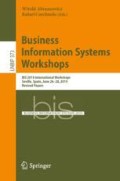Abstract
Machine learning and deep learning are all part of artificial intelligence and have a great impact on marketing and consumers around the world. However, the deep learning algorithms developed from the neural network are normally regarded as a black box because their network structure and weights are unable to be interpreted by a human user. In general, customers in the banking industry have the rights to know why their applications have been rejected by the decisions made by black box algorithms. In this paper, a practical grafting method was proposed to combine the global and the local models into a hybrid model for explainable AI. Two decision tree-based models were used as the global models because their highly explainable ability could work as a skeleton or blueprint for the hybrid model. Another two models including the deep neural network and the k-nearest neighbor model were employed as the local models to improve accuracy and interpretability respectively. A financial distress prediction system was implemented to evaluate the performance of the hybrid model and the effectiveness of the proposed grafting method. The experiment results suggested the hybrid model based on the terminal node grafting might increase the accuracy and interpretability depending on the chosen local models.
Access this chapter
Tax calculation will be finalised at checkout
Purchases are for personal use only
References
Goodman, B., Flaxman, S.: European union regulations on algorithmic decision-making and a “right to explanation”. AI Mag. 38, 50–57 (2017)
Adadi, A., Berrada, M.: Peeking inside the black-box: a survey on explainable artificial intelligence (XAI). IEEE Access 6, 52138–52160 (2018)
Karras, T., Aila, T., Laine, S., Lehtinen, J.: Progressive growing of GANs for improved quality, stability, and variation. arXiv:1710.10196v3 [cs.ne] (2018)
Ustun, B., Rudin, C.: Supersparse linear integer models for optimized medical scoring systems. Mach. Learn. 102(3), 349–391 (2016)
Došilović, F.K., Brčić, M., Hlupić, N.: Explainable artificial intelligence: a survey. In: 2018 41st International Convention on Information and Communication Technology, Electronics and Microelectronics (MIPRO), pp. 0210–0215 (2018)
Berk, R., Bleich, J.: Statistical procedures for forecasting criminal behavior: a comparative assessment. Criminol. Public Policy 12(3), 513–544 (2013)
Lundberg, S.M., Lee, S.I.: A unified approach to interpreting model predictions. In: Advances in Neural Information Processing Systems (NIPS 2017), vol. 30, pp. 4765–4774 (2017)
Roth, A.E. (ed.): The Shapley Value, Essays in Honor of Lloyd S. Shapley. Cambridge University Press, Cambridge (1988)
Ribeiro, M.T., Singh, S., Guestrin, C.: Why should I trust you? Explaining the predictions of any classifier. In: Proceedings of the 22nd ACM SIGKDD International Conference on Knowledge Discovery and Data Mining, pp. 1135–1144 (2016)
Rao, A., Golbin, I.: What it means to open AI’s black box. Next in Tech, PwC Blogs. http://usblogs.pwc.com/emerging-technology/to-open-ai-black-box (2018), last accessed 2019/04/14
Levashenko, V., Zaitseva, E.: Fuzzy decision trees in medical decision making support system. In: Proceedings of 2012 Federated Conference on Computer Science and Information Systems, pp. 213–219 (2012)
Guillaume, S., Charnomordic, B.: Learning interpretable fuzzy inference systems with Fispro. Int. J. Inform. Sci. 181(20), 4409–4427 (2011)
Liu, W., Wang, Z., Liu, X., Zeng, N., Liu, Y., Fuad, E.A.: A survey of deep neural network architectures and their applications. Neurocomputing 234, 11–26 (2017)
Webb, G.I.: Decision tree grafting from the all tests-but-one partition. In: Proceedings of the 16th International Joint Conference on Artificial Intelligence (IJCAI), vol. 2, pp. 702–707 (1999)
Author information
Authors and Affiliations
Corresponding author
Editor information
Editors and Affiliations
Rights and permissions
Copyright information
© 2019 Springer Nature Switzerland AG
About this paper
Cite this paper
Chou, TN. (2019). A Practical Grafting Model Based Explainable AI for Predicting Corporate Financial Distress. In: Abramowicz, W., Corchuelo, R. (eds) Business Information Systems Workshops. BIS 2019. Lecture Notes in Business Information Processing, vol 373. Springer, Cham. https://doi.org/10.1007/978-3-030-36691-9_1
Download citation
DOI: https://doi.org/10.1007/978-3-030-36691-9_1
Published:
Publisher Name: Springer, Cham
Print ISBN: 978-3-030-36690-2
Online ISBN: 978-3-030-36691-9
eBook Packages: Computer ScienceComputer Science (R0)

